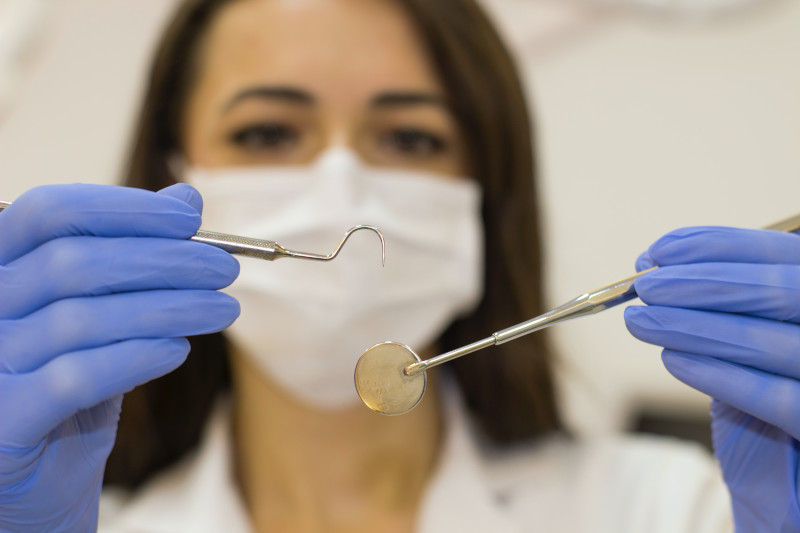Orthodontists are dentists who specialize in the prevention, diagnosis, and treatment of dental and facial issues. Generally, orthodontists must obtain a six or seven year degree — four years in dentistry with an additional two or three years in an orthodontic residency program accredited by the American Association of Orthodontists (AAO). There are many reasons to visit an orthodontist including:
- Preventing future dental problems, like teeth wear and gum disease;
- Improving self-esteem;
- Improving sleep apnea;
- Ensuring children’s teeth are developing correctly.
Orthodontists can play a huge role in maintaining oral health and overall health. If you ever need to visit an orthodontist, it’s important to know what they do and treat so you know what’s in store.
What Does an Orthodontist Do?
Typically, you would visit an orthodontist to help straighten and align your teeth. Misaligned teeth can cause various problems like:
- Excess wear and tear;
- Cracked teeth;
- Jaw strain;
- Temporomandibular joint disorder;
- Speech difficulties;
- Chronic headaches;
- Periodontal disease;
- Chewing and digestion problems.
To align and straighten teeth, orthodontists provide a variety of services and tools, including:
- Braces;
- Invisalign;
- Correcting bites;
- Facilitating proper occlusion;
- Treating poorly aligned jaws.
Oftentimes, a dentist will refer you to an orthodontist. It’s important to maintain regular doctor appointments if you are referred to an orthodontist; consistency can help maintain good oral health practices. While orthodontists see patients of all ages, it is recommended that children start seeing orthodontists when they are seven years of age to ensure their jaws and teeth are developing correctly. Orthodontists also create individualized care plans for their patients and recommend the right type of tool for the patient’s unique case.
Orthodontist vs. Dentist
An orthodontist and a dentist are similar in that they both treat oral health issues. Both are considered medical doctors and deal with maintaining healthy teeth and gums. However, there are many differences in these occupations. A dentist is a patient’s first point of contact and offers services relating to:
- Tooth decay;
- Root canals;
- Gum disease;
- Crowns;
- Bridges;
- Veneers;
- Teeth whitening.
Orthodontists, on the other hand, are dentists that specialize in tooth and jaw alignment and offer services related to:
- Overbites;
- Protruding teeth;
- Underbites;
- Crossbites;
- Spaces between teeth;
- Overcrowding of teeth;
- Jaw problems;
- Temporomandibular disorder treatment.
Additionally, a dentist’s education is different from an orthodontist’s. Although some dentists are also trained in orthodontic practices, they do not receive a specialized education like orthodontists. However, both professionals must be certified and pass a comprehensive exam before practicing on patients.
Most oral issues can be solved by seeing a dentist. This makes a dentist the oral care equivalent of a general practitioner — they help treat common oral issues and help maintain oral health with preventative care. If you need special treatment, a dentist will refer you to an orthodontist, the same way a general practitioner would refer you to a physical therapist or a cardiologist.
How to Become an Orthodontist
Becoming an orthodontist takes persistence and extensive education. They must have tangible traits like:
- Analytical skills;
- Problem-solving skills;
- Communication skills;
- Dexterity;
- Leadership skills;
- Organizational skills;
- Patience;
Orthodontists must also be detail-oriented, especially when it comes to the shape, color, and spacing of teeth.
The general steps to become an orthodontist are as follows:
- Obtain an undergraduate degree;
- Pass the Dental Admission Test and apply for dental school;
- Graduate from dental school;
- Complete a residency;
- Pass the National Board Dental Examination;
- Apply for a license to practice orthodontics.
It’s important to note that different states may have certain requirements you must meet before you can start practicing. Becoming a certified orthodontist can take up to 11 years — four years as an undergraduate, four years as a dental school student, and two to three years at a residency.
After obtaining an undergraduate degree, aspiring orthodontists must apply to dental school. The curriculum may vary from one dental school to another, however, most students will take basic classes their first year including histology, gross anatomy, dental anatomy, physiology, and microbiology. Students also learn hand skills to perform tasks like fillings and cavity preps and spend time in clinics to practice on real patients.
An orthodontic residency consists of supervised treatment on patients, lab work, and advanced coursework. Residencies are highly-competitive and many graduates apply several times before they are accepted. Then, after completing a residency, you must pass a board examination and complete your state’s license requirements. You can also become certified by the American Board of Orthodontists by passing written and clinical exams.
Orthodontists are extremely important when it comes to treating and maintaining oral health. By understanding what an orthodontist is and what they offer, you can make more informed decisions regarding your own oral health.
